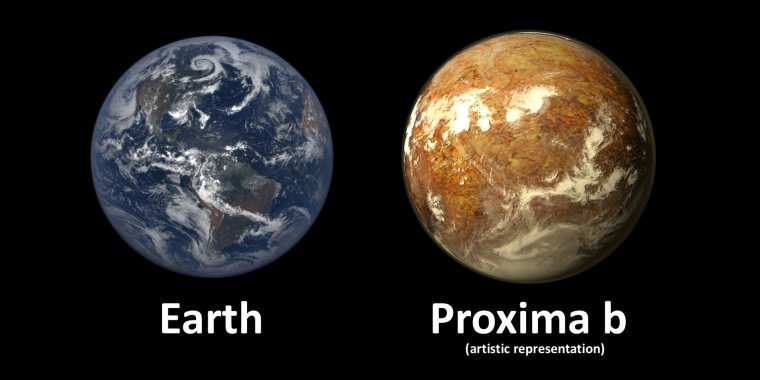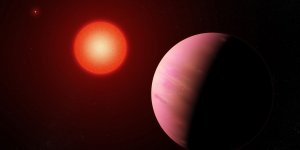| News / Space News |
Some Exoplanets May Have Greater Variety of Life than Exists on Earth
A new study indicates that some exoplanets may have better conditions for life to thrive than Earth itself has.

Size comparison of Earth and Proxima b. Proxima b might be about 10% larger than Earth given its minimum mass (1.3 Earth masses) and assuming a rocky composition. This particular artistic representation depicts Proxima b as a mostly desert-like, tidally-locked world with shallow oceans maintained by heat-exchange in a dense atmosphere. Photo: PHL @ UPR Arecibo, NASA EPIC Team
"This is a surprising conclusion," said lead researcher Dr. Stephanie Olson, "it shows us that conditions on some exoplanets with favorable ocean circulation patterns could be better suited to support life that is more abundant or more active than life on Earth."
The discovery of exoplanets has accelerated the search for life outside our solar system. The huge distances to these exoplanets means that they are effectively impossible to reach with space probes, so scientists are working with remote sensing tool such as telescopes, to understand what conditions prevail on different exoplanets.
Making sense of these remote observations requires the development of sophisticated models for planetary climate and evolution to allow scientists to recognize which of these distant planets that might host life.
"NASA's search for life in the Universe is focused on so-called 'habitable zone' planets, which are worlds that have the potential for liquid water oceans. But not all oceans are equally hospitable—and some oceans will be better places to live than others due to their global circulation patterns."
The team modelled likely conditions on different types of exoplanets using the ROCKE-3-D software, developed by NASA's Goddard Institute for Space Studies (GISS), to simulate the climates and ocean habitats of different types of exoplanets.
Their work has been aimed at identifying the exoplanet oceans which have the greatest capacity to host globally abundant and active life. Life in Earth's oceans depends on upwelling (upward flow) which returns nutrients from the dark depths of the ocean to the sunlit portions of the ocean where photosynthetic life lives.
More upwelling means more nutrient resupply, which means more biological activity. These are the conditions we need to look for on exoplanets.
They modelled a variety of possible exoplanets, and were able to define which exoplanet types stand the best chance of developing and sustaining thriving biospheres.
They have used an ocean circulation model to identify which planets will have the most efficient upwelling and thus offer particularly hospitable oceans. They found that higher atmospheric density, slower rotation rates, and the presence of continents all yield higher upwelling rates.
A further implication is that Earth might not be optimally habitable—and life elsewhere may enjoy a planet that is even more hospitable than our own.
The first exoplanet was discovered in 1992, and currently more than 4000 exoplanets have been confirmed so far. The nearest known exoplanet is Proxima Centauri b, which is 4.25 light years away.
Currently much of the search for life on exoplanets focuses on those in the habitable zone, which is the range of distances from a star where a planet's temperature allows liquid water oceans, critical for life on Earth. (Tasnim News Agency)
YOU MAY ALSO LIKE





